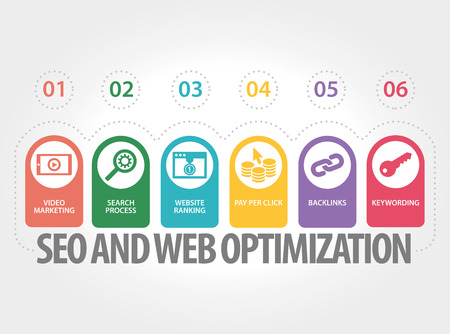1. Understanding the Impact of Reputation Damage
In today’s fast-paced digital world, a brand’s reputation can be damaged in a matter of hours. For U.S. consumers, trust is built on transparency, consistency, and values that align with their own. When a company falls short—whether due to a public scandal, poor customer service, or an insensitive marketing campaign—it can lead to serious consequences for its image.
Common Causes of Reputation Loss in the U.S. Market
Understanding what typically leads to reputation damage helps businesses avoid similar pitfalls. Here are some of the most common causes:
| Cause | Description | Example |
|---|---|---|
| Poor Customer Service | Negative experiences shared online can quickly go viral. | A viral tweet about rude service at a retail store sparks boycott calls. |
| Product Failures or Recalls | Faulty products can damage consumer trust and trigger safety concerns. | A tech company recalls thousands of devices due to battery issues. |
| Controversial Statements or Actions | Comments made by executives or brand representatives can reflect poorly on the company. | A CEOs offensive remarks during an interview lead to nationwide backlash. |
| Ethical or Legal Violations | Any involvement in fraud, discrimination, or unethical practices severely impacts brand image. | A financial firm faces lawsuits for misleading investors. |
| Cultural Insensitivity in Advertising | Missteps in marketing campaigns that overlook cultural norms or issues often offend audiences. | An ad is pulled after accusations of racial stereotyping spark outrage. |
The Role of Public Perception and Media Coverage
The way the public perceives a brand is heavily influenced by how stories are portrayed in the media. News outlets, bloggers, and influencers shape opinions through headlines and commentary. In the U.S., where freedom of press is strong, negative news spreads fast and wide—even when the facts are not fully clear yet. Once a narrative takes hold, it becomes difficult for brands to shift the conversation back in their favor.
The Power of Social Media Backlash
Social media platforms like Twitter (X), Facebook, TikTok, and Instagram allow users to voice their opinions instantly and publicly. A single post from an angry customer or a trending hashtag calling out a brand can spiral into a full-blown crisis within hours. This phenomenon, known as “cancel culture,” has become especially prominent in American online communities. Brands that don’t respond quickly—or respond poorly—risk losing loyal customers and partners alike.
Key Takeaways on Reputation Damage:
- Reputation loss can stem from various sources including customer complaints, product issues, or leadership missteps.
- Media coverage amplifies both positive and negative stories; bad press travels faster than good news.
- Social media allows consumer voices to go viral—brands must monitor and address issues swiftly.
- The longer a company waits to respond to criticism, the deeper the impact on consumer trust.
This understanding sets the foundation for developing smart strategies to recover from reputation damage and rebuild trust with U.S. consumers.
2. Owning Up and Taking Responsibility
In the United States, taking responsibility when things go wrong is not just a nice gesture — its a cultural expectation. American consumers value honesty, transparency, and accountability, especially when a brand has made a mistake. The way a company responds in these moments can either help rebuild trust or further damage its reputation.
Why Transparency Matters
Americans tend to distrust companies that appear secretive or evasive after making a mistake. Whether it’s a product recall, customer data breach, or public controversy, consumers expect clear communication about what happened, why it happened, and what steps are being taken to fix it.
Elements of Transparent Communication:
| What to Communicate | Why It Matters |
|---|---|
| Acknowledgment of the issue | Shows you’re aware and not ignoring the problem |
| A sincere apology | Demonstrates empathy and responsibility |
| An explanation of what went wrong | Adds context and builds understanding |
| A plan for corrective action | Tells customers how you’ll prevent future issues |
The Power of a Genuine Apology
A real apology can go a long way in U.S. culture. Consumers are often willing to forgive brands that admit fault quickly and offer meaningful solutions. A generic or overly polished statement can backfire — people want to hear from real leaders with real emotions.
Avoid These Common Mistakes:
- Denying or minimizing the issue
- Pushing blame onto others without accountability
- Irritating legal jargon that sounds cold or defensive
Case Studies: Doing It Right
Toyota (2010 Recall Crisis)
Toyota faced backlash over safety concerns involving unintended acceleration. Initially criticized for their slow response, they later issued a clear apology from top executives, recalled millions of vehicles, and invested heavily in safety technology. Their transparent actions helped restore consumer confidence over time.
Starbucks (Philadelphia Incident – 2018)
After two Black men were arrested at a Philadelphia store while waiting for a meeting, Starbucks CEO Kevin Johnson publicly apologized within hours. He called the incident “reprehensible,” met personally with the individuals involved, and closed 8,000 stores for racial-bias training — all widely seen as strong recovery steps.
The Role of Leadership in Rebuilding Trust
The voice behind an apology matters. In American culture, its often expected that CEOs or top executives step forward during crises. Their visibility signals sincerity and commitment to change.
Tone Tips for Leadership Statements:
- Sincere: Avoid corporate speak; speak like a human.
- Courageous: Don’t shy away from admitting fault.
- Straightforward: Be direct about what’s being done next.
A heartfelt apology paired with honest communication isnt just damage control — its the first step toward rebuilding credibility with American consumers who value authenticity over perfection.

3. Rebuilding Through Consistent Brand Action
When a brands reputation takes a hit, rebuilding trust with U.S. consumers requires more than just apologies and promises—it demands consistent action that aligns with the company’s values. American consumers are especially attentive to what companies do, not just what they say. This means your brand must walk the talk through community involvement, product quality, and ethical behavior.
Community Engagement that Matters
One of the most effective ways to rebuild reputation is by actively participating in local communities. Whether its supporting local nonprofits, sponsoring school programs, or organizing volunteer days for employees, these actions show you care beyond profits. Americans appreciate companies that give back and genuinely connect with the people they serve.
Examples of Community Engagement Activities
| Activity | Impact on Reputation |
|---|---|
| Sponsoring local charity events | Shows commitment to social responsibility |
| Offering employee volunteer programs | Builds internal culture and public goodwill |
| Collaborating with community leaders | Cultivates trust within specific demographics |
Improving Product and Service Quality
No amount of marketing can fix a bad product. U.S. consumers expect high-quality goods and services—and they’ll quickly voice their dissatisfaction online if expectations aren’t met. To regain trust, brands must focus on improving what they deliver. That means better customer service, upgraded materials or technology, and transparent communication about what’s being fixed.
Key Areas to Focus on for Quality Improvement
| Focus Area | Description |
|---|---|
| Customer feedback loops | Create systems for collecting and acting on reviews and complaints |
| Product testing and innovation | Invest in R&D to ensure reliability and performance |
| User experience (UX) | Simplify processes and interfaces to reduce frustration |
Pursuing Ethical Business Practices
A growing number of U.S. consumers prefer to support brands that align with their personal values. Being transparent about sourcing, labor practices, environmental impact, and corporate governance helps build long-term credibility. Businesses that demonstrate integrity—especially after a crisis—are more likely to earn forgiveness and loyalty.
Tactics for Building Ethical Trust:
- Sustainable sourcing: Use eco-friendly materials and highlight them in marketing.
- Diversity & inclusion: Showcase diverse leadership and inclusive hiring practices.
- Transparent reporting: Share annual reports detailing your progress on ethics-related goals.
The road to reputation recovery isnt easy, but consistent brand actions—rooted in real values—can create a solid foundation for renewed consumer trust in the U.S. market.
4. Leveraging Third-Party Endorsements and Reviews
When working to rebuild your brand’s reputation with U.S. consumers, third-party validation plays a powerful role. Americans tend to trust what others say about your brand more than what you say yourself. This makes external endorsements—like positive media coverage, customer testimonials, and influencer support—key tools in earning back trust.
Why Third-Party Validation Matters
In the U.S., consumer trust is often shaped by peer feedback and media influence. Positive opinions from respected sources help reassure customers that your brand is making real changes and moving in the right direction.
| Type of Endorsement | Trust Impact | Example |
|---|---|---|
| Positive Press Coverage | High – Trusted media outlets signal credibility | A feature story in Forbes about new company initiatives |
| Customer Testimonials | Medium – Real experiences show proof of change | A video testimonial on your website or social platforms |
| Influencer Partnerships | Medium to High – Influencers build emotional connections with followers | An Instagram post from a trusted lifestyle influencer highlighting your brand |
Using Positive Press Strategically
If your company has recently improved its practices, reach out to journalists or submit press releases highlighting these updates. Focus on stories of transformation, such as improvements in product quality, customer service upgrades, or sustainability efforts. Make it easy for reporters to share your progress by offering interviews, data, and visuals.
The Power of Customer Testimonials
User-generated content can be one of your most authentic tools. Ask satisfied customers to share their stories through short videos, quotes, or reviews. Highlight these across your website, social media pages, and marketing materials to show real-world proof that people are giving your brand another chance—and liking the results.
Tips for Gathering Authentic Testimonials:
- Email follow-ups after purchases asking for feedback
- Loyalty program rewards for leaving reviews
- Create a branded hashtag for customers to share their experiences on social media
Tapping Into Influencer Trust
Select influencers who genuinely align with your brand values and have an engaged U.S.-based following. Transparency is key—make sure they disclose partnerships clearly, as American audiences value honesty in sponsored content. Influencers can demonstrate how your brand has changed and why they’re excited to support you again.
Selecting the Right Influencers:
- Nano or micro-influencers (1K–100K followers) often have higher engagement rates and stronger local influence
- Diversity matters—choose voices that reflect the variety of your U.S. audience
This multi-layered approach helps create a chorus of credible voices telling a consistent story: your brand is listening, improving, and worth trusting again.
5. Creating a Long-Term Reputation Management Plan
Rebuilding trust with U.S. consumers takes time, and maintaining that trust requires a long-term strategy. A one-time fix won’t be enough—your brand needs to stay committed to transparency, engagement, and adaptability. Here’s how you can build a strong reputation management plan for the future.
Monitor Brand Sentiment Consistently
Keeping an eye on how your customers feel about your brand is crucial. Use tools that analyze social media, online reviews, and customer feedback to get real-time insights into public sentiment. This helps you catch issues early and respond before they escalate.
Recommended Tools for Monitoring Sentiment:
| Tool | Main Features |
|---|---|
| Brandwatch | Tracks conversations across social platforms and news sites |
| Google Alerts | Sends email updates about brand mentions online |
| Hootsuite | Monitors social media mentions and keywords |
| Trustpilot/ReviewTrackers | Manages and analyzes customer reviews |
Create a Crisis Response Plan
No matter how careful your brand is, mistakes can happen. Having a crisis response plan ready will help you act fast and reduce damage when issues arise. Your plan should include clear roles, communication channels, and pre-approved messaging templates.
Key Elements of a Crisis Response Plan:
- A designated crisis response team with defined responsibilities
- A checklist for immediate actions (e.g., internal communication, public statement)
- Templates for social media updates and press releases
- A process for tracking the issue until it’s resolved
Engage with Consumers Regularly
Building trust isn’t just about fixing problems—it’s about building relationships. Stay connected with your audience through consistent communication that shows you value their feedback and care about their experience.
Ways to Maintain Ongoing Engagement:
- Respond promptly to comments on social media and review platforms
- Send out regular newsletters with updates, tips, or behind-the-scenes content
- Create customer appreciation campaigns or loyalty programs
- Invite customers to participate in surveys or product testing groups
The more engaged your audience feels, the more likely they are to support your brand—even when things go wrong.


